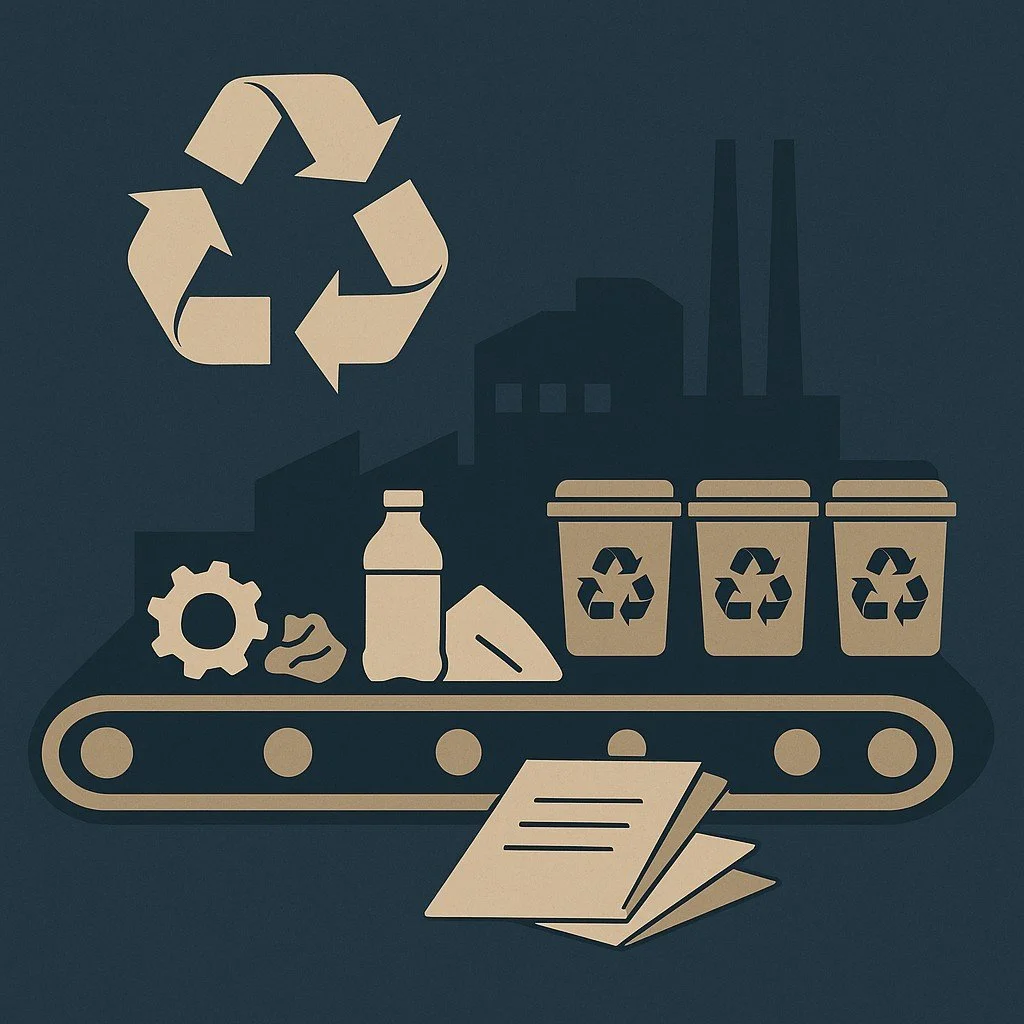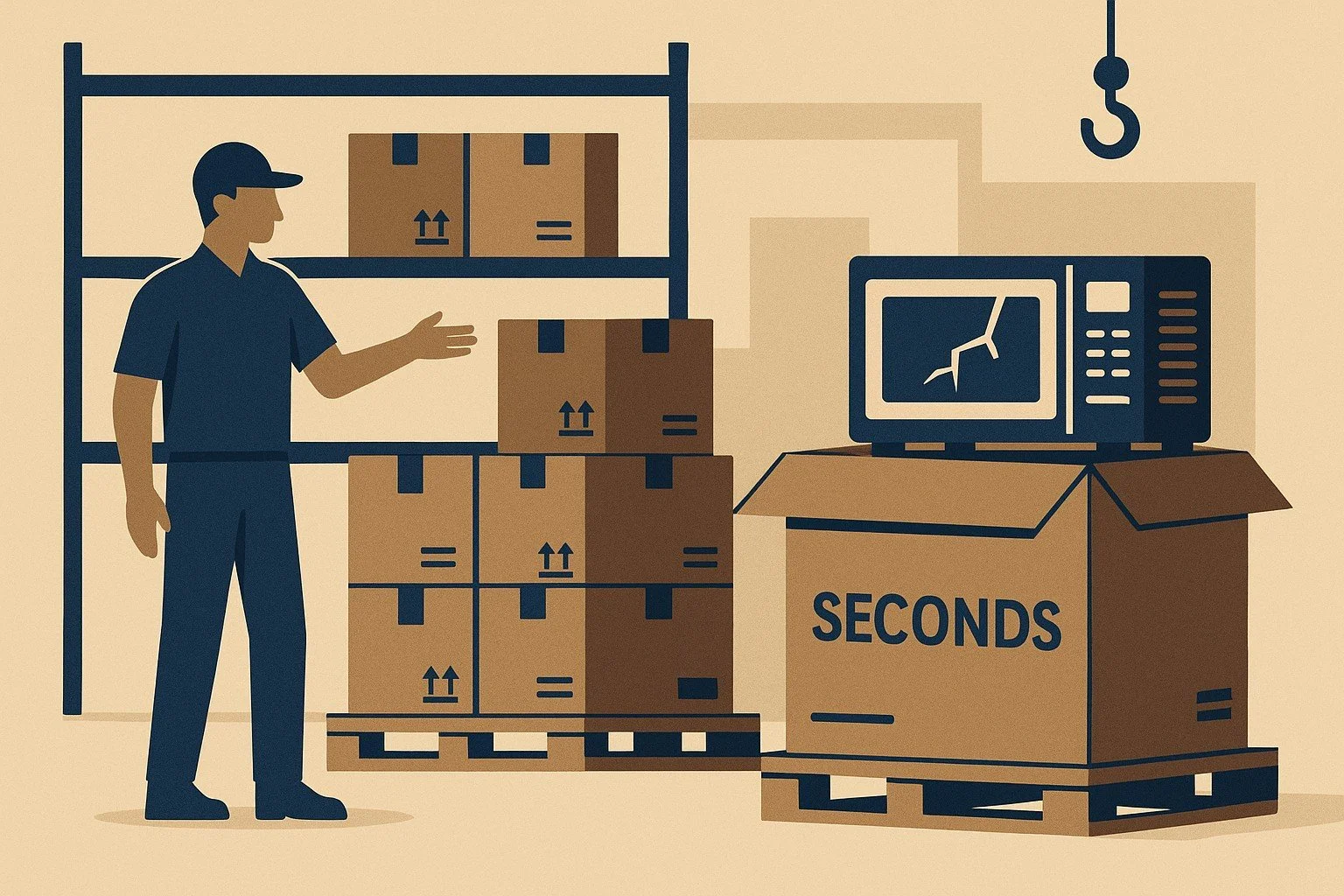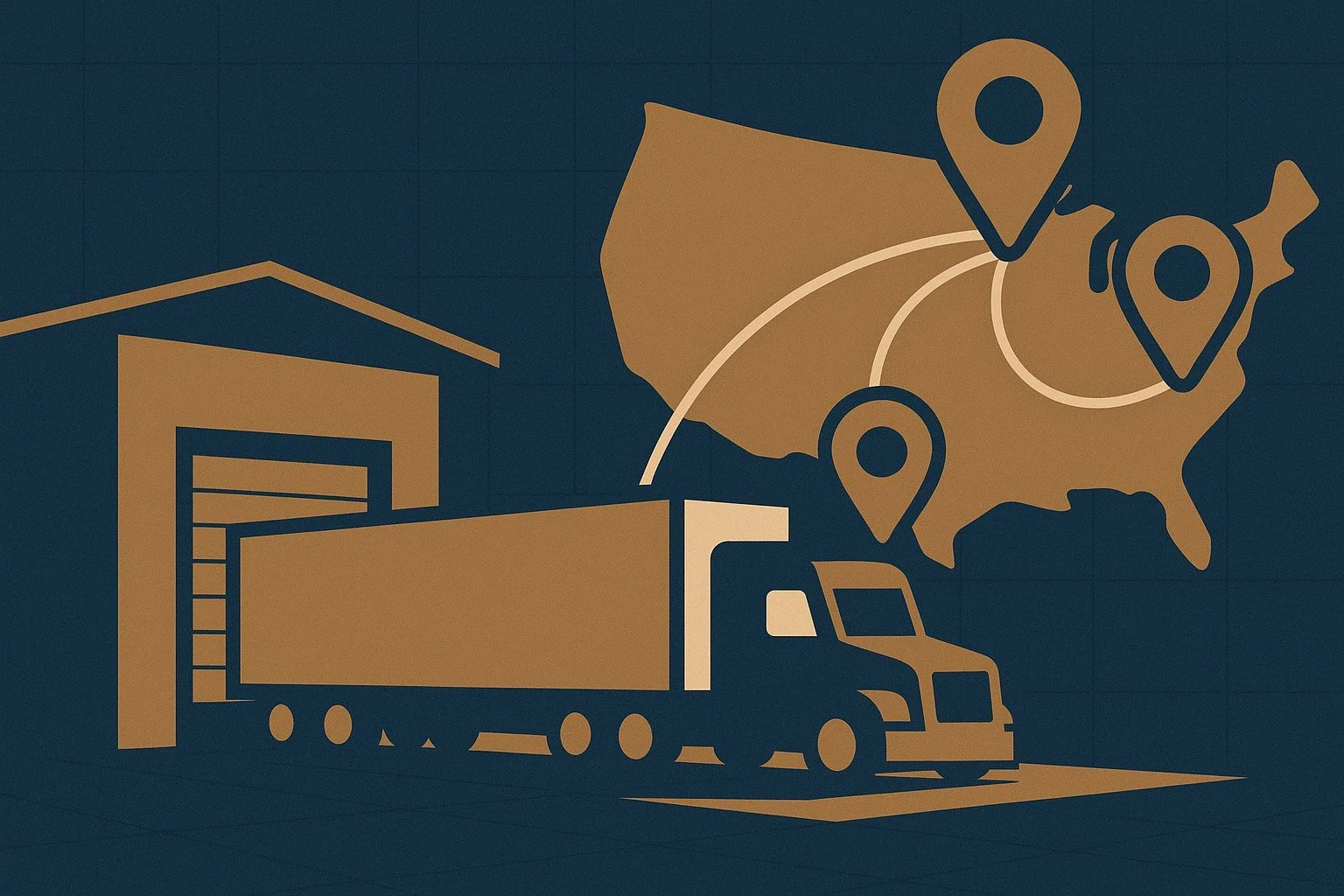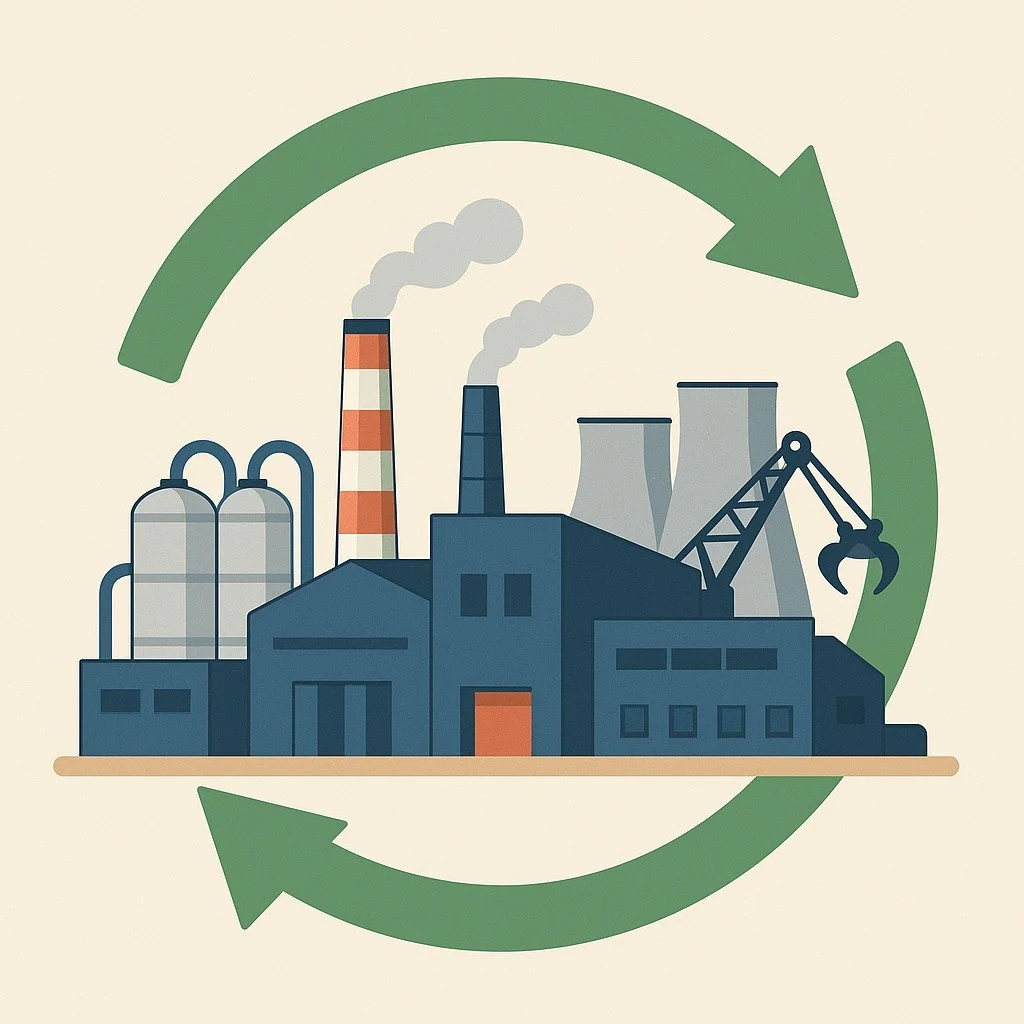Dig Deeper with Waste Optima’s Blog Posts
Explore Waste Optima’s industrial recycling blog for practical guides, examples, and frameworks on landfill diversion and beneficial reuse. Articles help manufacturers, warehouses, and EHS teams improve costs, operations, and environmental performance across plastics, metals, chemicals, organics, and surplus inventory.
Is Your Byproduct Feed-Grade? The Industrial Qualification Guide
For industrial food manufacturers, the line between "Trash" and "Commodity" is often defined by a single question: Is it safe for an animal to eat?
While the concept of diverting food waste to animal feed is simple, the execution requires strict adherence to quality standards. Manufacturers are often hesitant to explore feed diversion because they fear liability or regulatory non-compliance.
It’s Not All F006: Disposal Solutions for Non-Hazardous Phosphate & Polish Sludge
In the metal finishing industry, "F006" is the boogeyman. This EPA listing for wastewater treatment sludge from electroplating operations carries heavy regulatory burdens and expensive disposal fees.
However, many EHS Managers and Plant Operators inadvertently bundle all their finishing waste into this expensive category.
Heavy Metal, Low Risk: Recycling Non-Hazardous ECM Filter Cake
or manufacturers of turbine blades, medical implants, and precision aerospace components, Electrochemical Machining (ECM) is a critical technology. But it creates a heavy, dense byproduct: ECM Filter Cake.
The Pallet Problem: Solving Bulk Disposal for Finished Food Inventory
For cold storage operators and distribution center managers, few words are more dreaded than "Recall" or "Expired Stock."
When a full truckload of frozen pizzas, cookies, or packaged meats hits its expiration date, it stops being an asset and becomes a massive logistical liability. You are left with a difficult choice: pay exorbitant landfill tipping fees for heavy organic weight, or pay your own labor force to manually unwrap thousands of units to recycle the food.
From Liability to Lipid: Monetizing High-Fat Industrial Waste
In the world of waste management, few things are as operationally difficult as "sticky" waste. For manufacturers of nut butters, chocolates, and fried snacks, disposing of off-spec product is a nightmare. It is heavy, it clogs standard compactors, and commercial composters often reject it due to the high fat content slowing down their breakdown process.
Beyond Rendering: The Industrial Guide to Recycling Cured & Processed Meats
For facility managers at meat processing plants, "waste" usually means one of two things: sending raw slaughter material to a rendering plant or sending finished, off-spec goods to a landfill. Both options are expensive. Rendering fees fluctuate with commodity markets, and landfilling organic waste carries heavy weight-based tipping fees—not to mention the environmental impact on your Scope 3 emissions.
A Summary of Environmental Pragmatism
Environmental pragmatism is a branch of environmental philosophy—rooted in classical American pragmatism—that prioritizes democratic problem-solving over winning abstract debates. Consolidated in the 1996 volume edited by Andrew Light and Eric Katz, it embraces moral pluralism, policy “experimentalism,” and Bryan Norton’s convergence idea to keep action moving while disagreements about ultimate values continue.
Industrial Plastic Film Recycling: Why Baling Is the Only Scalable Option
The only practical way to recycle large volumes of plastic film from plants and warehouses is to bale it. Baling turns fluffy, hard-to-ship film into dense, consistent blocks buyers accept—cutting trash pulls and often earning a rebate. Start with a vertical baler near your stretch-wrap stations, keep film clean and separate, and ship full truckloads on a set schedule.
What the 2024 EREF Report Says About U.S. Landfill Costs
The Environmental Research & Education Foundation (EREF) has released its annual “Analysis of MSW Landfill Tipping Fees — 2024”, providing the most comprehensive look yet at how much it costs to dispose of municipal solid waste (MSW) across the United States.
Surplus Chemicals at Terminals: Redistribution, Reuse & Rapid Monetization
Cancelled orders and no-shows leave terminals holding perfectly good, new-in-drum chemicals. Instead of sitting on liability and storage costs, here’s how to move compliant, sealed product into responsible downstream uses quickly.
Rejected Freight & Stranded Inventory: How 3PLs Turn “Problem Loads” into Cash
Stranded inventory after a cancelled PO or consignee refusal doesn’t have to become a write-off. This guide shows warehouses and 3PLs exactly how to monetize rejected, refused, or unclaimed freight—fast—while staying compliant and protecting relationships.
Liquidate Excess Inventory Without Losing Value
Every business runs into the same problem sooner or later: too much stuff sitting in the warehouse. It could be products tied to a canceled order, last season’s line that didn’t sell through, or packaging that became outdated after a rebrand. Whatever the reason, excess inventory ties up cash and clogs valuable space.
Efficient Recycling in Factories: Best Practices for Waste Reduction
Wondering how to improve recycling in factories? This article provides practical steps, from waste audits to investing in recycling equipment, to help you reduce waste and save costs.
Industrial Waste Optimization: A Guide to Improving Costs, Operations, & the Environment
Most companies think about waste only when a dumpster is full or an invoice arrives. Waste optimization flips that mindset. Instead of just “taking out the trash,” you design how waste leaves your facility so it costs less, runs smoother, and supports your environmental goals.
Factory Seconds Explained: How to Turn Imperfect Products Into Profit
Every manufacturer faces the reality of factory seconds — products that are functional but don’t meet retail’s strict quality standards. A small scratch, dent, misprint, or outdated package can prevent a product from being sold as first-quality.
Why “Industrial Recycling Near Me” Isn’t Always Local
Searching “industrial recycling company near me” usually surfaces nearby scrap yards, cardboard recyclers, or municipal MRFs. Those can be great for pallets, OCC, and basic container service. But most manufacturers and warehouses also generate streams that are heavier, more complicated, or more specialized than the local shop is built to handle. That’s where a wider outlet network and a national operating model often outperform “closest to me.”
Excess Inventory: Strategies to Recover Value and Free Up Space
Excess inventory is one of the most common yet overlooked challenges in modern business. Every company — from consumer goods manufacturers to industrial suppliers — eventually finds itself with more product than it can sell.
Mill Scale Recycling: From Steel Waste to Valuable Resource
Every ton of steel produced generates byproducts that are often overlooked yet hold untapped value. One of the most important of these byproducts is mill scale—a flaky, dark, iron-rich material that forms on the surface of hot-rolled steel. For decades, mill scale was treated as waste, swept away and discarded.
US Industrial Waste Stats - The myth of 7.6 Billion Tons
If you’ve spent time in recycling literature, you’ve almost certainly seen the claim that the United States generates 7.6 billion tons of industrial waste each year. It’s quoted by consultants, repeated on agency handouts, and echoed across blogs and corporate pages.
Waste of Industries: A Guide to Definitions, Types, & Solutions
The waste of industries—sometimes called industrial refuse or factory waste—is one of the largest and least understood contributors to global waste streams. While municipal solid waste (household trash) often dominates public discussion, the reality is that industrial waste represents over 50% of total solid waste generated in the United States each year.




















